As we know Solar panels are the device which absorb sun rays to generate electricity. The basic unit of a solar panel is Solar cell which is made up of by semiconductor mostly silicon. Many of solar cells are connected together to form solar panels. Basically, there are three types of solar panels available in the market. Depending on the crystal structure it is of two types i.e. (i) Mono-crystalline (ii) Poly-crystalline and another one is Thin-film Solar panel.
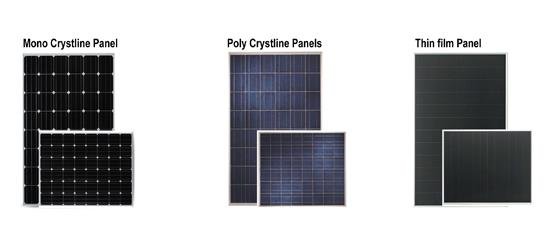
MONO-CRYSTALLINE SOLAR PANEL
First of all, why it is called as mono-crystalline because it is made up of a single crystal of pure silicon. It is the oldest type of solar panel. These cells are made from a cylindrical silicon ingot that has been cut into thin wafers. Monocrystalline cells are more efficient than other types of solar cells, and thus monocrystalline panels are often used in residential and commercial solar energy systems. Because monocrystalline solar cells are made out of a single crystal of silicon, electrons can flow easier through the cell, which makes the PV cell efficiency higher than other types of solar panels. They are made by growing a single crystal of silicon in a laboratory and it is very expensive. These cells appear black due to the interaction between sunlight and pure silicon. These are used in a variety of applications, such as spacecraft, handheld calculators, and solar-powered homes.
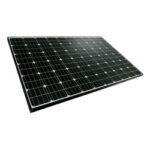
Advantages
- Among all solar panel types, monocrystalline cells have the highest efficiency typically in the 15-20% range.
- As this solar panel is more efficient so it produces more power.
- These are having greater heat resistance.
- In case of low level of sunlight, it can make power.
- Manufacturers state that this form of solar cell lasts the longest, it gives 25-year warranty.
- monocrystalline solar cells can be recycled. As it is made of 3 main components i.e. monocrystalline cells, Glass and Metal. These are all can recycle.
- Disadvantages
- These are most expensive.
- Most monocrystalline solar cells have a temperature coefficient of around -0.3%C to -0.5%C. So when the temperature rises, the monocrystalline solar cell will temporarily lose 0.3% to 0.5% of its efficiency.
- There is a lot of waste material when the silicon is cut during manufacture.
POLY-CRYSTALLINE SOLAR PANEL
As it is made up of several crystals of silicon, it named as poly-crystalline solar panel. These panels are most popular panel among all the solar panels. Fragments of silicon crystals are melted and then cut into wafers to make these panels. polycrystalline solar panels are more eco-friendly than monocrystalline solar panels as they do not require individual shaping and placement of each crystal and most of the silicon is utilized during production. So, very less waste is produced. The acceptable maximum temperature of polycrystalline solar panels is 85 °C while the acceptable minimum temperature is -40 °C.
Polycrystalline solar panels are less expensive to produce than monocrystalline solar panels, but they are also less efficient. They are less efficient because the grain boundaries between the crystals act as barriers to the flow of electrons.
These solar panels are used in a variety of applications, including consumer electronics, solar thermal power, and photovoltaic power generation.
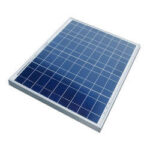
Advantages
- The manufacturing process of these panels are cheaper and easier than the monocrystalline cells.
- These panels have high power density.
- During its manufacturing process, it avoids silicon wastes and requires very few fossil fuels.
- These are more eco-friendly than monocrystalline solar panels.
Disadvantages
- These are less efficient between 13%-16%.
- It has lower output rate.
- It needs more roof space for installation.
- They damage easily when exposed to high temperatures.
THIN FILM SOLAR PANEL
A thin-film solar panel is made of thin films of semiconductors deposited on glass, plastic or metal. These are cheaper alternatives to single or multi crystalline cells. Their main drawbacks are that they have low efficiency and they degrade in outdoor applications. They perform best when used indoors with diffused or indoor lights. Thus, they are ideally suited in applications such as pocket calculators, electronic watches, small radio receivers and low power hand-held electronic instruments.
For these panels there is no any predictable crystal structure. These are very thin so it is lightweight and flexible. There are several types of thin-film solar panels: amorphous silicon (a-Si), cadmium telluride (CdTe), and copper indium gallium selenide (CIGS) or gallium-free CIS.
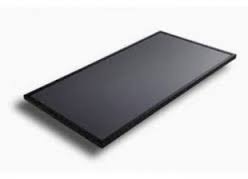
Advantages
- It is very flexible and can be applicable to a range of situations and building types.
- Large no of production is easy to achieve, making them potentially cheaper to produce than crystalline solar cells.
- It can install in shadow area.
Disadvantages
- As they take up a lot of space so it is not good for domestic use.
- It has low efficiency.
- It has shorter lifespan and so shorter warranty periods.
WHICH SOLAR PANEL WOULD BE BEST FOR YOU
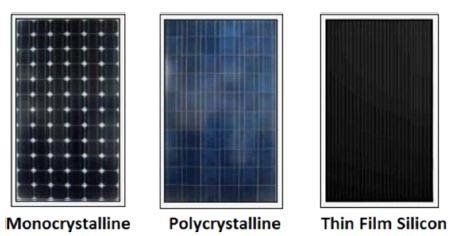
In the world of solar panels, there are three main types: monocrystalline and polycrystalline, and thin film solar panel. All have their own advantages and disadvantages.
So, which type of solar panel is right for you? It depends on your needs and budget. Read on to learn more about the differences between monocrystalline, polycrystalline and thin-film solar panels.
| Parameters | Mono | Poly | Thin-film |
| Efficiency | 15%-20% | 13%-16% | 5%-10% |
| Materials used | Single crystal of silicon | Several Crystal of silicon | Amorphous si(Thin Si layer) |
| Life Span | 25-30yr | 20-25yr | 15-20yr |
| Weight per m2 | Higher | Higher | Lower |
| High temp. performance | Drops 10-15% | Drop 20% | Drop 0% |
| Cost | More Expensive | Less Expensive | Less Expensive |
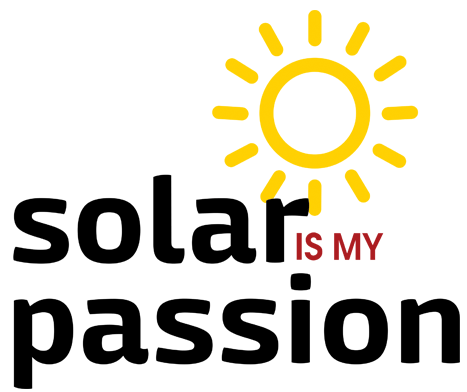

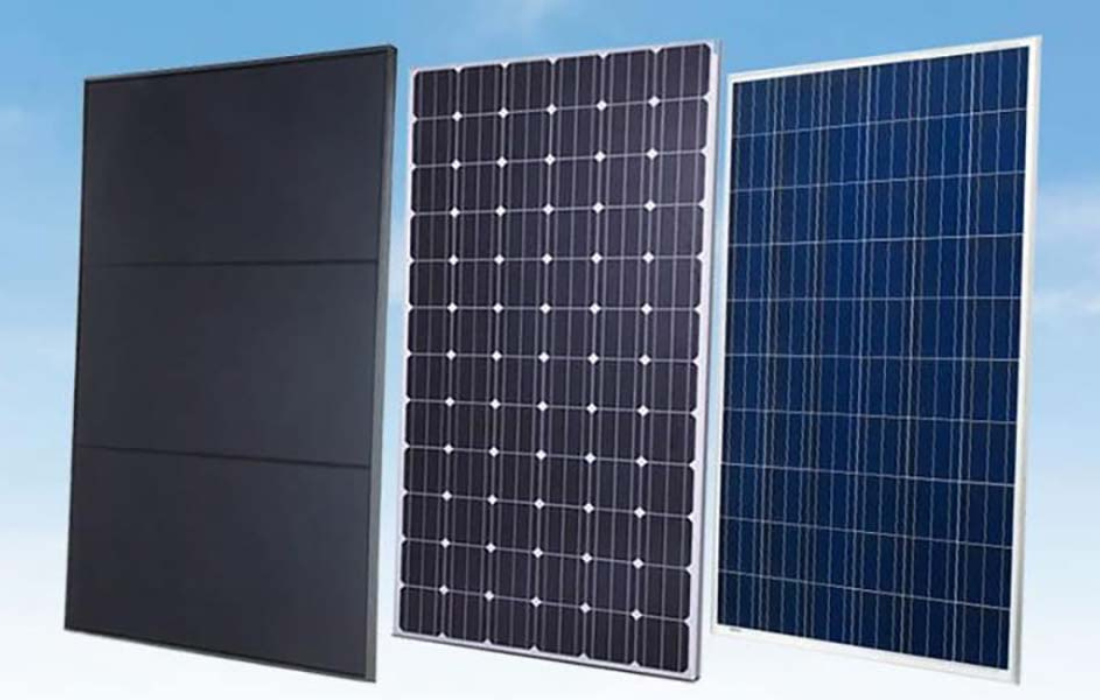
Very good information sir and useful for all solar vendors
Thanks Anil
Sir, All free information is very useful to us.
Thanks Arvind